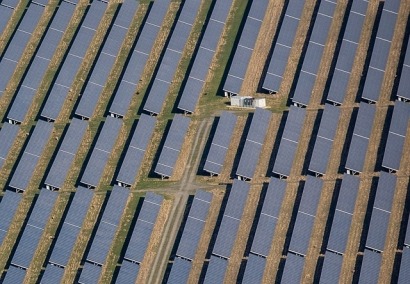
US panel imports skyrocketed last year to a record 54 GW, surging 82% from 2022 and growing almost tenfold over the past five years, according to the S&P Global Market Intelligence Global Trade Analytics Suite, which relies on data reported to the US Census Bureau.
Imports in the fourth quarter of 2023 hit 15 GW, rising 40% from a year earlier. That eclipsed the previous quarterly high of 14.2 GW in last year's third quarter and marked the fifth consecutive quarter of US photovoltaic (PV) panel imports in excess of 10 GW.
Imported PV panels exceeded domestic production capacity and installations in 2023. Some industry representatives and consultants say reliance on imports, combined with a global module glut and plummeting prices, are jeopardizing domestic factories.
Booming imports "suggest that despite all US rhetoric and investment, extreme dependence on Chinese PV inputs continues — and continues to grow," said Emily de La Bruyere, co-founder of Horizon Advisory, a consultancy focused on geopolitics.

Southeast Asian factories drive imports
PV shipments to the US have been growing since President Joe Biden granted a two-year moratorium in June 2022 on antidumping and anticircumvention tariffs applied to crystalline-silicon solar cells and modules from Cambodia, Malaysia, Thailand and Vietnam. After Biden's tariff waiver expires in June, companies have until December to install panels to avoid duty collection.
In the meantime, shipments from Southeast Asia are accelerating. Cambodia, Malaysia, Thailand and Vietnam together accounted for 84% of US panel imports in the fourth quarter of 2023, up from 78% in the third quarter, according to the Market Intelligence Global Trade Analytics Suite.
Data collected by Panjiva, a supply chain research unit of S&P Global Market Intelligence, indicates that the most prolific shippers to the US in the fourth quarter included subsidiaries of Arizona-based thin-film PV company First Solar Inc. and affiliates of China-headquartered companies Trina Solar Co. Ltd. and Boway Group.
Trina, one of the world's largest PV-makers, rejected the Commerce Department's determination that it was among several China-based companies circumventing tariffs. Trina and other Chinese companies plan to take advantage of IRA incentives to serve the growing US solar market with local panel factories while expanding their supply chains to the wafer level in Southeast Asia.
According to an S&P Global Commodity Insights analysis of the Commerce Department ruling, PV panel imports relying on non-Chinese wafers and produced with polysilicon cleared by US Customs and Border Protection will become the only way to comply with both the tariff decision and the Uyghur Forced Labor Prevention Act, a 2021 law that banned shipments linked to China's Xinjiang region unless importers can verify the goods were made without forced labor.
China has consistently denied allegations of forced labor.
"We hope the two countries will continue to carry out active and practical cooperation in the fields of clean energy such as photovoltaic power generation and climate change, jointly explore a green and low-carbon development path, and make due contributions to addressing climate change and global climate governance," Liu Pengyu, a spokesperson for the Chinese Embassy in Washington, DC, said Feb. 19 in an emailed statement.
Pengyu pointed to the November 2023 Sunnylands Statement in which the US and China agreed to enhance cooperation on climate issues on various fronts, including by boosting renewables installations.
De La Bruyere of Horizon Advisory voiced caution, however.
The US should protect government incentives with stronger "domestic content requirements and prohibitions on Chinese companies," she said. "Across the board, US policy needs to stop building in loopholes and exemptions for China to take advantage of and get serious about ensuring trusted, clean solar production."

